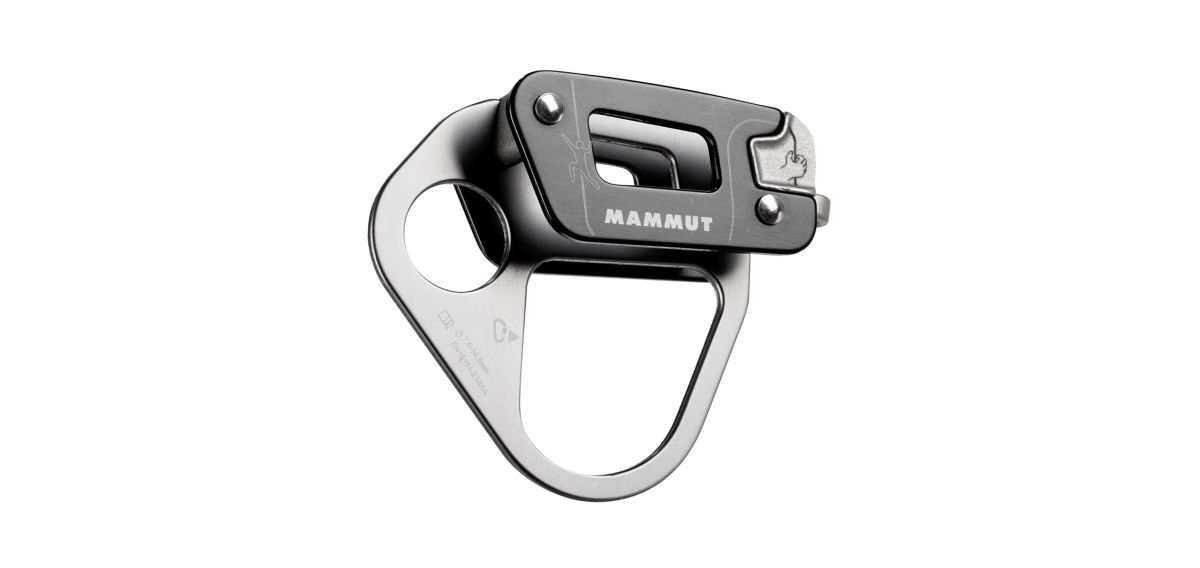
Mammut Nordwand Alpine Belay Review
29/11/2023
By Graham Johnson
I don't blitz through belay devices the way guides or those who climb in particularity dirty areas do, but I do seem to replace them fairly often. While shopping for a replacement for another worn out device, I found the Mammut Nordwand Alpine Belay device. Mammut seems to like this style of rivited-together belay devices (Smart, Smart Alpine, Smart 2.0 etc …) but what stood out to me—other than the stamped retainer loop (as opposed to a rubberized cable like everyone else seems to do)—was that the high wear surfaces are steel instead of aluminium. The only other steel belay devices that I know of are Edelrid's Jul series.
‘This must weigh a lot, since it's steel’ you are probably thinking. Somehow, Mammut has managed to get this device in line with the rest of the belay world, coming in at 80g. For comparison, BD’s ATC Guide (8.1–11mm) also comes in at 80g, while the BD ATC Alpine Guide (8.1–9mm) is 73g. The other device I use a lot, the DMM Pivot (7.3–11mm) comes in at 72g. So the new Mammut offering is still in the conversation in terms of weight—for a significant increase in durability and while being rated for ropes from 7.5–10.5 mm.
How does it perform? Pretty well, most of the time. The first time I used it, I was belaying my partner up on a less than perfectly situated anchor and the friction was significant. Much more so than on my previous devices on the same anchor (I'd done that particular route before) and my elbows were aching by the time he got to the first anchor. The carabiner I was using was an HMS from Mammut, so I didn't think that was going to be a problem (surely they tested their belay device with their own HMS biners?). I thought maybe it was the carabiner—which was not a perfectly round-stock biner, but after subsequent (much more successful) use, I suspect that it was the low anchor that really contributed to the friction in that situation. Many more pitches later, I can say that while there is still a little more friction in guide mode than some other devices, it isn't a big deal so long as the belay is optimally positioned. Using a fully round-stock HMS biner seem to help, too.
The higher friction translates into the abseil as well—again only marginally so. The marketing material talks about the higher resistance to heating up that steel has versus aluminium—unscientifically, it still feels hot at the end of a 60m abseil—so I don’t think this is really a selling point. Anecdotally, it makes a different noise than the aluminium devices I've used—more of a BZZZZZZZ sound. I recently used it on an ice trip in Canada where we used 7.1mm half ropes—it was mighty fast on these! I had to use some trickery to make abseiling go at a reasonable speed, but it still worked fine.
Belaying a leader or a top-rope is much the same as any other device, so I don't have much to comment on here.
The elephant in the room is the solid retainer loop. Some of my friends have looked at this and said, ‘Oh, I'd never buy that because it looks weird’. This stamped bit of aluminium has both the belay loop and the guide-mode loop as one solid piece. It's a non-issue. I don't even notice it as being any different functionally than a standard rubber-coated cable.
Overall this is a very good device—much more durable than an all-aluminium device with no significant weight penalty and good performance at around the same price point as the rest of them. If you find yourself replacing belay devices frequently, then this is worth checking out. After several months of regular use the rope-bearing surfaces are perfect. The aluminium plates on the outside are a little scratched up from thrutching my way up a chimney with it on my harness, however. It does require a little more thought in anchor site selection when using it in guide mode and it is a little more performance sensitive to carabiner selection than some other devices. I expect to be using this for several more years before it needs to be replaced.
3.5 stars
